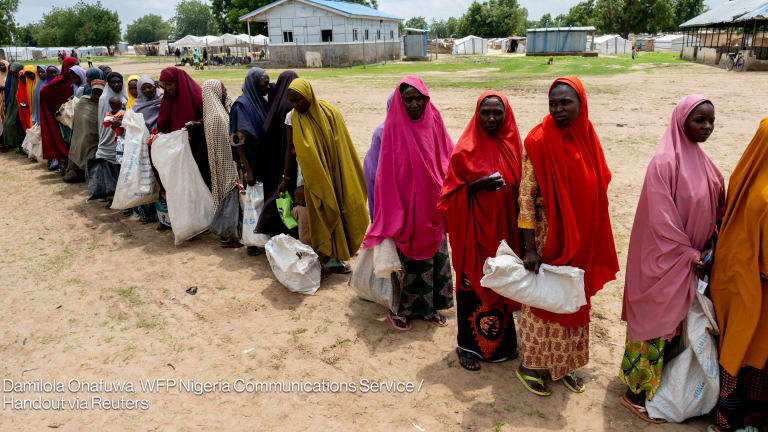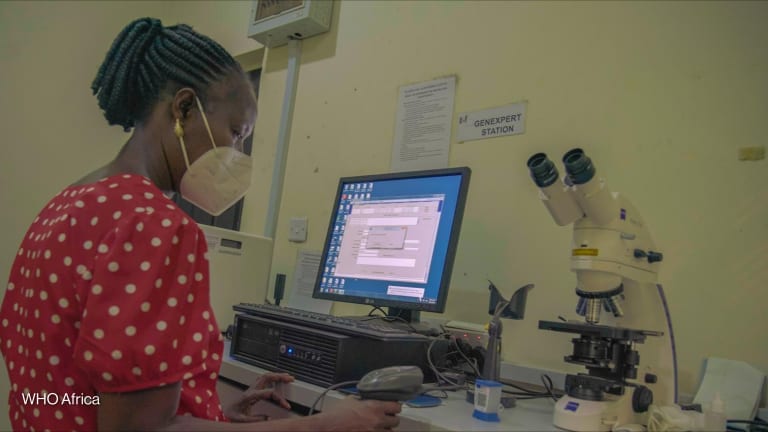
It’s often sobering to discover how the humanitarian community really appears in the eyes of others. But instead of not daring to ask what people think, we ought to take the time to pose more thoughtful questions — even if critical of current programming — and carefully analyze the responses to better target the delivery of aid. With repeated and collective efforts to track and manage such perception data, in time we may find our reflection becomes more attractive.
This is especially true in Afghanistan, where the decades-long conflict caused over 3,500 civilian deaths last year, the highest number of casualties since 2010. With this dramatic deterioration in the security situation, the space for humanitarian action and aid workers has tightened drastically. At first, aid agencies pulled out of the provinces to relatively safe Kabul; today, with attacks routinely reaching the capital, Kabul has become a fortress where aid workers attempt to manage projects from behind high blast walls.
Despite innovative programming approaches that use third-party monitors and remote management, the gap is still widening between aid actors and those they are trying to serve. This makes aid less relevant because districts in need are out of reach. Moreover, when delivered remotely, humanitarian programs tend to become more basic and of lesser quality and impact.
It’s hard to imagine how stronger armour or tighter security rules will help solve the problem, even if they are necessary in the short run. Taking a longer term view, everybody agrees that meaningful aid programming is impossible without stable acceptance from local communities and the wider population. As a result, humanitarian agencies that do not fully understand what communities think of them will always struggle to gain their trust. That’s why it is high time to rethink our measures of quality, the perspective through which we judge it, and how we communicate about aid in Afghanistan.
Aid agencies must start communicating if they want to build trust.
As budgets shrink, aid agencies in Afghanistan have under-invested in understanding and nurturing their own image. Instead, identities are often proclaimed, assuming that people will “get it.” This assumption is no longer viable. Communication experts know that the key to successful marketing is a simple message, repeated relentlessly. But humanitarians in Afghanistan (and other places of constrained access) in recent years have been forced to do the opposite. Their message has become increasingly complicated: we are the humanitarian U.N., not the peacekeepers; we spend American money to strengthen the government, but also deliver impartial humanitarian assistance. At the same time, years of maintaining a low profile with hidden logos meant almost zero messaging, let alone repetition. As a result, communities are confused about the aid sector, and aid agencies seem to have lost track of their own image.
Asking local communities to describe this image can be quite sobering to humanitarian aid agencies that like to be seen as independent, impartial, and as working in line with the humanitarian principles. Ground Truth’s data shows that people know little about who aid agencies are and what services they offer. For example, even though cash transfers for people affected by crisis are almost exclusively provided by aid agencies, people responding to Ground Truth’s Cash Barometer survey largely perceive this as a government service, which can hardly be expected to be neutral. When we asked a sample of 783 people in 13 provinces about their opinion on humanitarian aid, they perceived it as rather unfair, something that mostly goes to influential people and those with connections. Many people find it necessary to offer favors or pay bribes in order to access aid.
While many respondents didn’t support everything that foreign aid providers do, they did seem open to revising their views. Indeed, recent Ground Truth surveys showed that people who had been in contact with aid agencies felt respected by their staff. Survey responses also pointed to the need for more precise and accurate information about the aid available to these communities with specific suggestions about how this could be done — via radio, directly to households, TV, as well as traditional communication channels such as Mullahs and the local mosque.
The interest shown in aid providers is a door half open. With the right communication strategy, aid agencies gain the needed entrée to build acceptance and increase the space for further humanitarian action. But the first order of business is to strengthen communication efforts. To manage the risk for field staff, stronger communication needs to be about humanitarian aid in general rather than big visibility campaigns mounted by individual organizations. But within all aid agencies, communication experts need to be empowered to reach out more actively, and donors should afford more flexibility to fund their work. Rather than seeing communications as something that distracts from direct implementation, it is increasingly becoming a precondition for any programming at all.
To shift perception, data and listening play major roles.
Trust can be built through continuous, two-way communication — by listening to affected communities as well as providing useful information. But this strategy is only effective in the long run when and where supported by action and performance management systems that put the right incentives in place. Currently, monitoring and evaluation systems focus heavily on upward accountability and compliance. And aid programs often miss the point in the rush to crow about their short-term successes.
Performance management, therefore, must be understood more broadly. Data collected in dozens of countries indicates that people affected by crisis care deeply about their participation in aid projects, about the quality of the services provided, the fairness of those services, and whether the aid received empowers them to live a better life in the future — even where this is beyond the traditional scope of humanitarian aid.
That’s why in addition to the hard facts gleaned from traditional monitoring, the views of aid recipients (and non-recipients) need to be tracked, analyzed, and acted upon. After years of operating in remote control, the tools to do this are there. Third-party monitors can — with the right training — pose the right sort of perception questions while tools for digital data collection can make the process highly efficient and easy to track. At the same time, open source software can help collect quantitative and qualitative data.
But it’s up to aid agencies and their managers to make sure this information is included in the relevant decision-making processes, with appropriate follow-up by aid staff.
Join the Devex community and access more in-depth analysis, breaking news and business advice — and a host of other services — on international development, humanitarian aid and global health.








